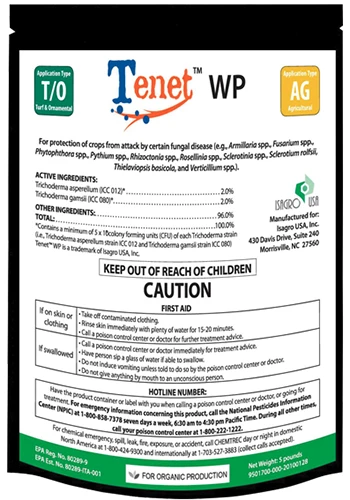[ad_1]
Sclerotium rolfsii
Southern blight is dreaded by home gardeners and commercial growers alike.
The Sclerotium rolfsii fungus that causes the disease is believed to be able to lie dormant in the soil for up to four years.
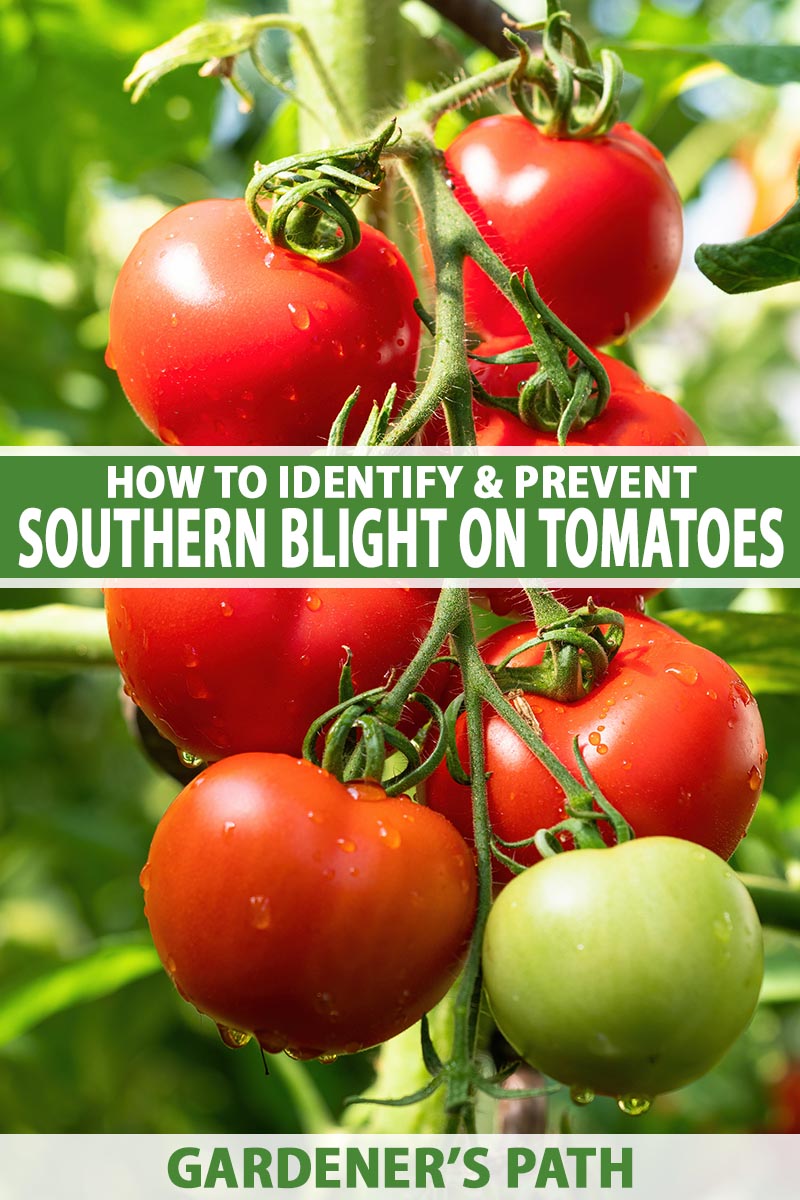

We link to vendors to help you find relevant products. If you buy from one of our links, we may earn a commission.
Once temperature and humidity conditions are right and it finds a host plant on which to become established, it is extremely difficult to eradicate.
Rather than trying to treat an infection, it’s far better for vegetable gardeners to concentrate on preventing southern blight in their tomato plants before it gets established.
In this guide, we’ll share tips for cultural control, as fungicides available to home growers are largely ineffective against this pathogen.
Here’s what to expect:
Symptoms of Southern Blight in Tomatoes
Symptoms of infection are hard to miss in once healthy, green tomato plants. The leaves turn a sickly yellow color and begin wilting very quickly.
Unlike bacterial wilt or other common tomato ailments, this blight also causes a lesion to form around the collar of the tomato stem, girdling it where it comes in contact with the soil.
The lesion is usually covered in a white mold, called mycelium.
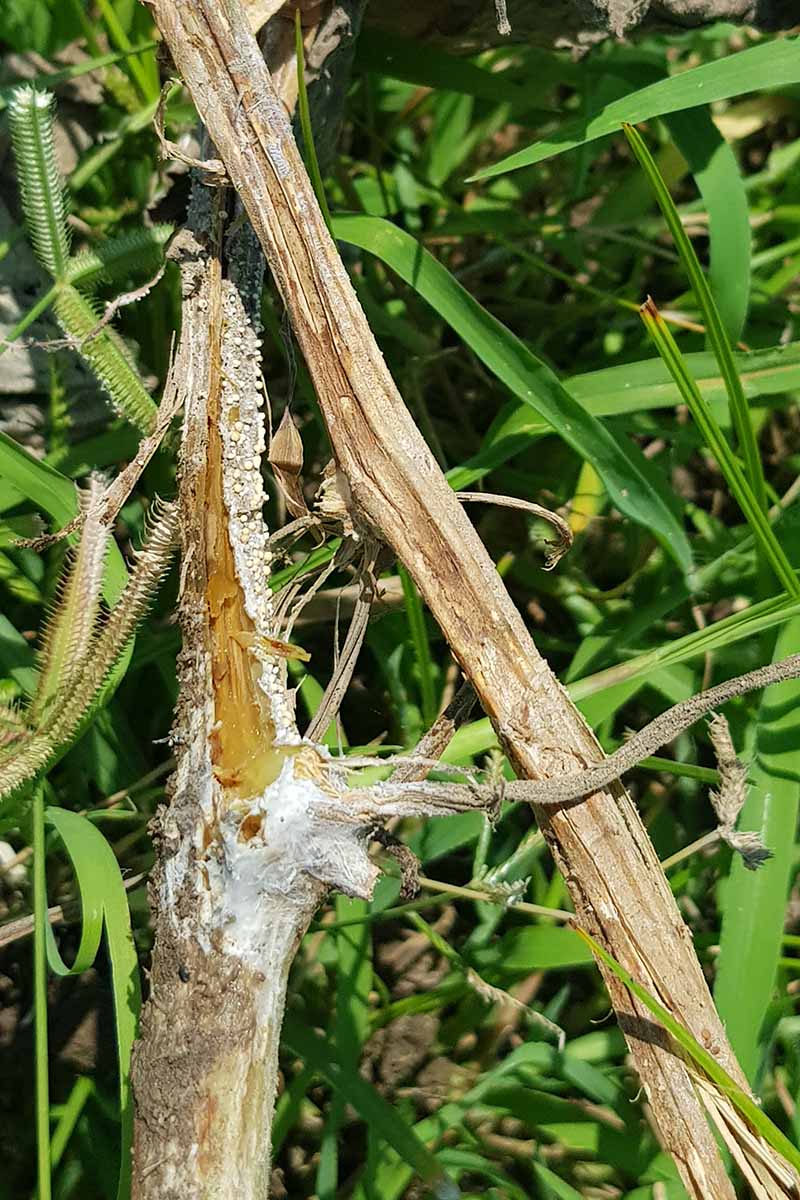

Within the patch of mycelium are round, beadlike fungal structures of a white or cream color.
They turn brown at maturity and look a bit like mustard seeds, readily falling to the ground to rest in the soil.
These beads are called sclerotia and they are small enough that many gardeners do not even notice them, inadvertently spreading them around the garden via footwear or tools.
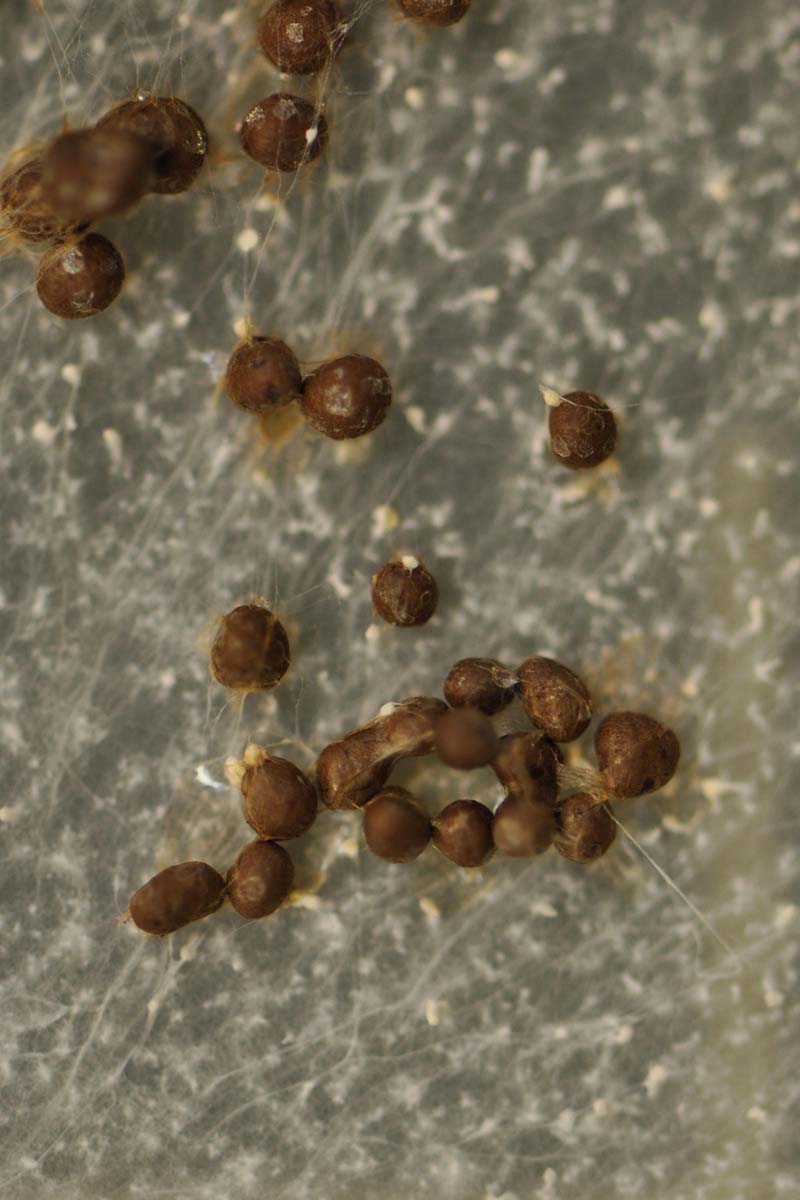

The sclerotia can endure through several seasons, living through harsh heat. Their main vulnerability is that they can’t survive extreme cold.
The reason the disease is called “southern” blight is because it is more prevalent in the warm, humid conditions of the southern US.
Sclerotia attach themselves to decaying plant matter on and in the ground before infecting healthy plants. In addition to causing the plants to wilt, within three or four days of infection they can cause the fruits to ripen prematurely, ruining some or all of your harvest.
Plants suffering from southern blight may also form “adventitious root formations,” little roots on the lower stems that look like yellow stubble.
In the absence of any other symptoms these roots are not a reliable indicator that your plants are suffering from southern blight, as they may be caused by other stressors.
Tomatoes are not the only plants susceptible to infection. Southern blight can infect over 500 different plants.
Other popular backyard garden plants including beans, eggplants, peas, peppers, watermelons, and carrots can also play host to the fungus.
If the sclerotia from these other infected vegetables remain in the soil where tomatoes are later planted, the fungus can infect the new seedlings.
Read on to learn about other factors that encourage southern blight.
Sources of Infection
Several fairly ordinary gardening conditions can lead to southern blight infection, or make it worse.
Seedlings purchased from any nursery that reuses potting soil or does not sterilize reused containers are an often overlooked source of initial infection.
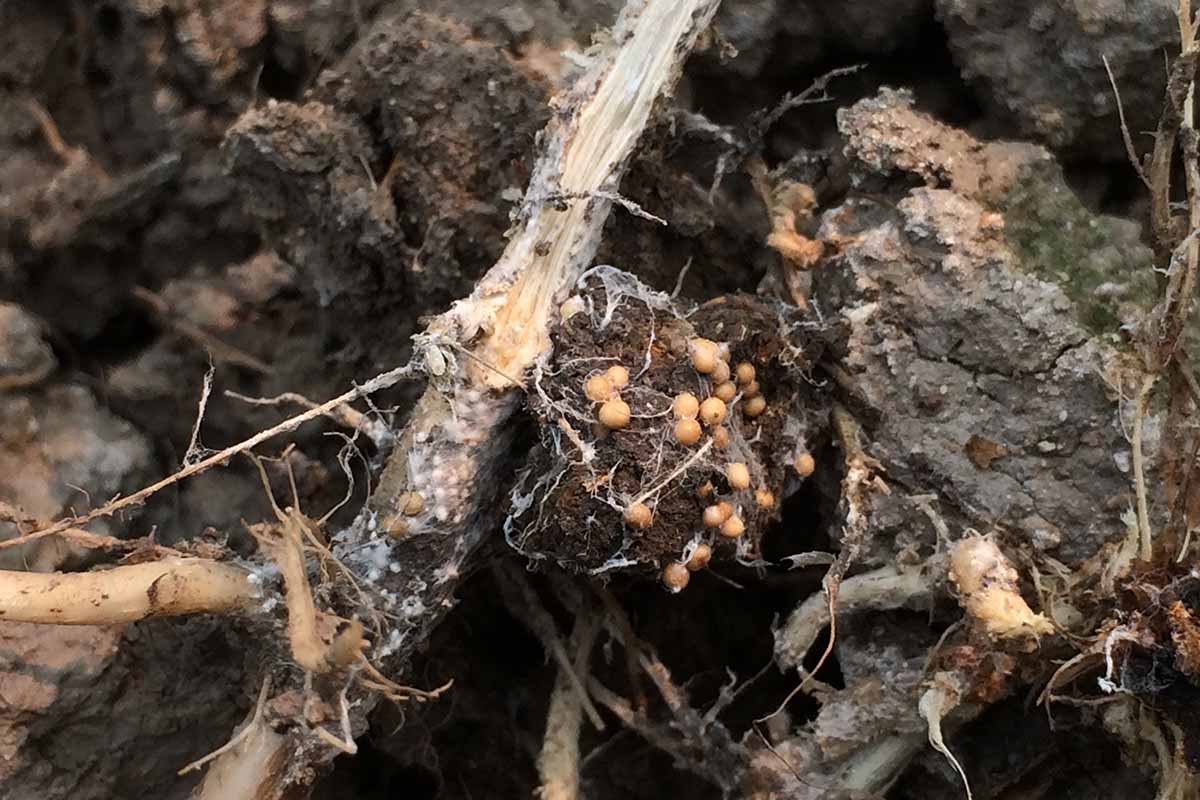

Sclerotia multiply more quickly in humid conditions combined with temperatures between 77 and 95°F.
A long period of hot, dry weather followed by heavy rain will spur the fungus into action. Once it starts to spread, a blight attack can destroy an entire crop in days.
Sclerotia stay confined to one area of soil in a garden if they don’t have a host plant to live on.
But many gardeners plant multiple varieties in different parts of the vegetable garden on the same day, digging in one part of the garden and then digging in a different part.
Failing to sanitize gardening tools between plantings is similar to a surgeon operating on a patient without cleaning their scalpel or hands first or afterwards.
This is the quickest way to spread southern blight and infect an entire garden.
Many gardeners also prefer to grow tomatoes in large patio containers.
While this is easier than digging in tough earth, the buildup of heat and moisture in containers can create an ideal environment for the fungus to thrive.
How to Prevent Southern Blight
Your odds of avoiding southern blight are greater when tomatoes are planted in the ground with wide spaces between plants to allow sufficient air circulation, rather than planting densely or in containers.


Air circulation helps to ensure the stems remain dry at the soil line where the fungus is known to attack.
It’s also a good idea to keep plots weeded to deprive the fungus of additional potential hosts and to eliminate debris where they could overwinter at season’s end.
A commonly overlooked source of sclerotia is the dirt caught in the treads of garden shoes.
Walking through infected soil and then tramping through the garden may allow southern blight fungi to hitch a ride, and you may carry spores or sclerotia into other sections of the yard.
Some gardeners employ crop rotation to help decrease the number of sclerotia in the soil.
The idea is that over time when the sclerotia cannot find a suitable host, they begin to die off. This is a plausible method that could feasibly take two or three years to succeed.
Rotating with crops that are somewhat resistant to the disease such as corn, wheat, sorghum, or oats can help reduce the sclerotia in the soil.
Removing plant debris and keeping a tidy garden can help prevent the sclerotia from getting a foothold.
A study conducted in 2022 concluded that the use of beneficial fungi in the Trichoderma genus, could suppress the growth of S. rolfsii.
Tenet® WP contains two Trichoderma species, T. asperellum and T. gamsii.
It should be applied to the soil seven days before planting as a preventive measure. Note that this product will not treat an existing infection.
You can find Tenet® WP available at Arbico Organics in 16-ounce packages. Be sure to read the directions carefully before application.
Treatment Options
Unfortunately there is no treatment for a southern blight infection. Certain chemical fungicides are available for commercial growers but these are not feasible for use in the home garden.
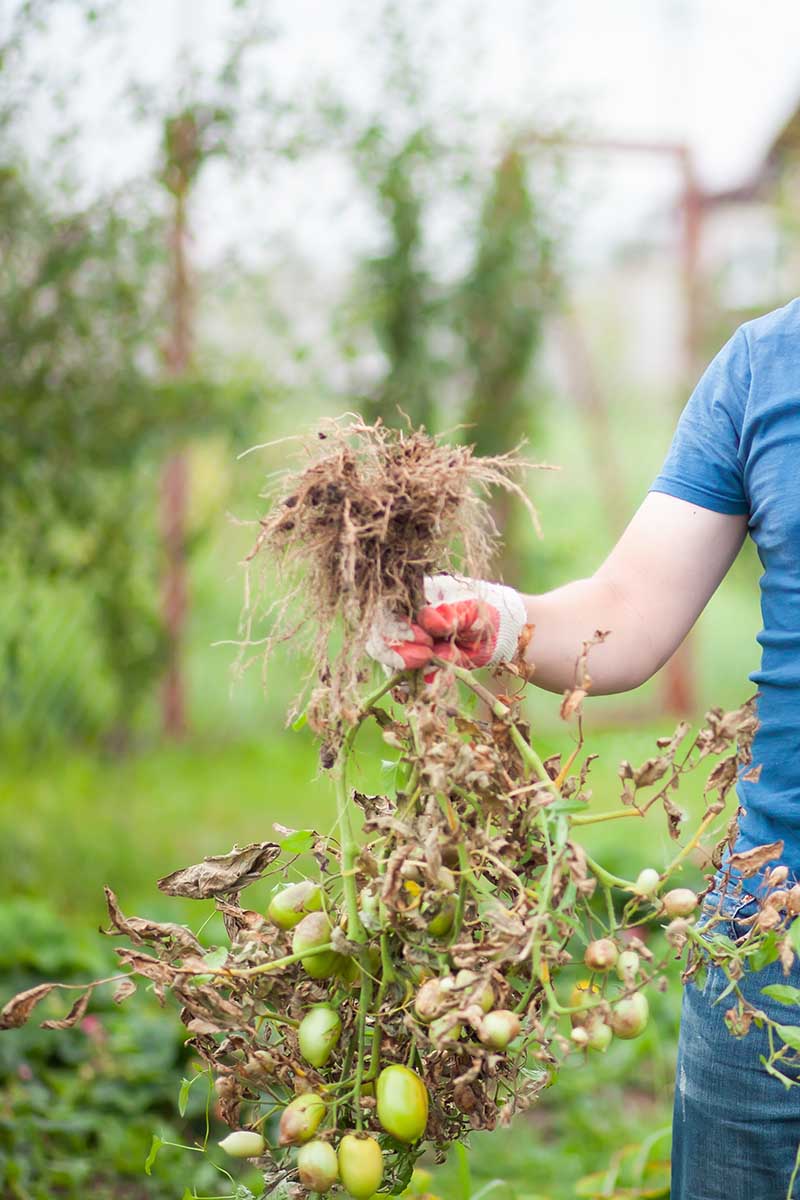

If you discover your tomato plants are infected, you’ll need to dig them up and dispose of them in the trash – don’t put them on the compost pile!
If you are growing your crop in containers, dispose of the soil and be sure to sanitize the pot with a 10 percent bleach solution (nine parts water to one part bleach) before reusing.
You can solarize the soil in the infected garden bed, by placing plastic sheeting over the surface of the soil for about eight weeks during the summer months.
After solarization and prior to planting, you can treat the soil with Tenet WP, mentioned above.
A Pox on Tomato Southern Blight
Sound gardening practices and a sharp eye for early indication are your best defenses against southern blight in a homegrown tomato crop.


Do you have any further suggestions for coping with this dreaded garden foe? The comments section below welcomes your input and questions.
Should you be looking for information about other tomato diseases, these guides might be of use:
[ad_2]
Source link

